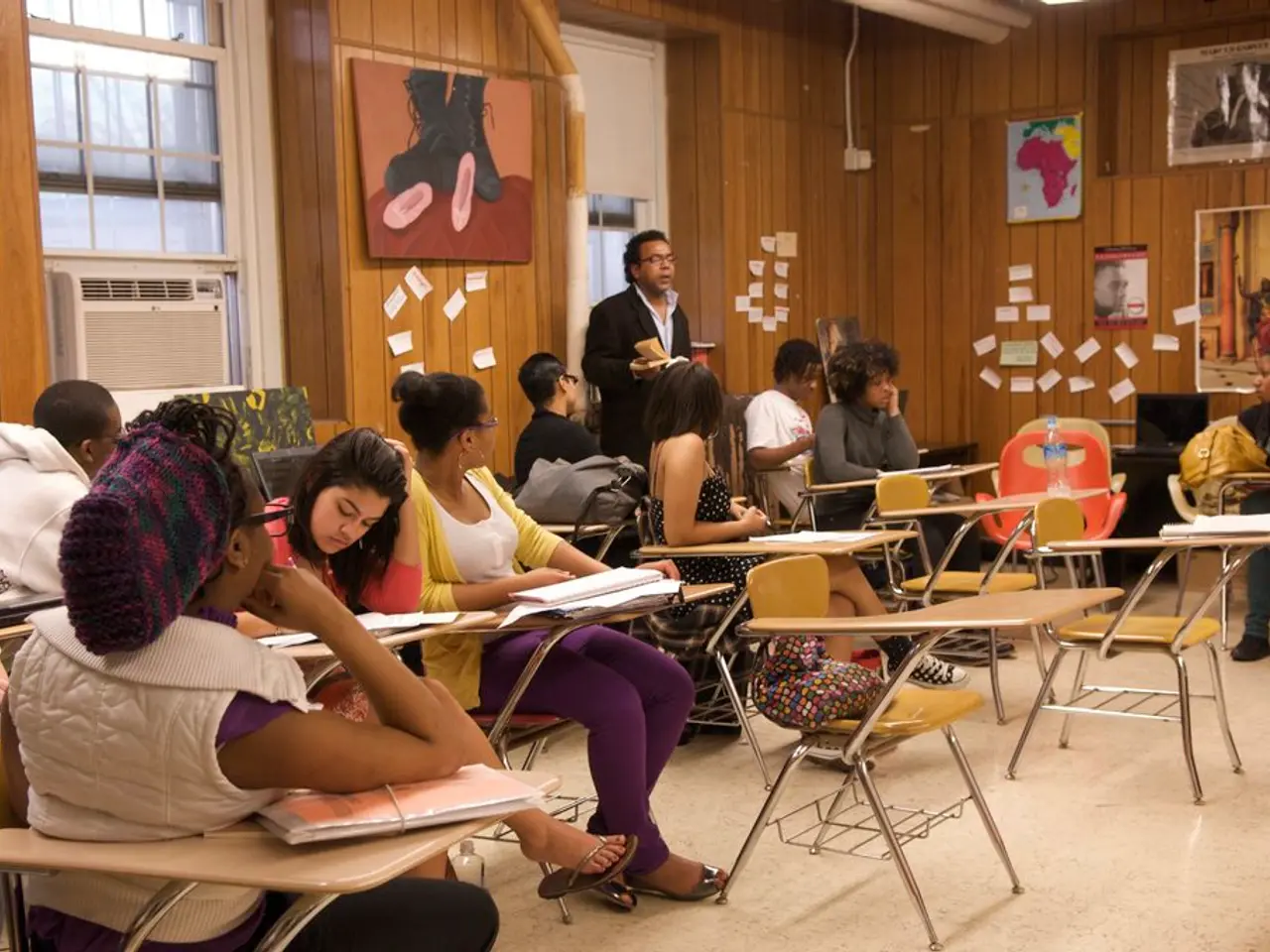Encouraging Knowledge Gain through Active Learning Methods in the Classroom
In the ever-evolving landscape of education, a significant shift is taking place towards more interactive, engaging, and personalised learning experiences. This transformation is driven by the growing adoption of active learning techniques, which prioritise student engagement, critical thinking, and real-world application.
At the heart of these approaches is Experiential Learning, a methodology that encourages direct engagement with the learning experience. By applying theoretical concepts in real-world contexts, learners develop critical thinking skills, fostering a deeper understanding of the subjects they study.
Online discussion forums, interactive simulations, multimedia presentations, and digital collaboration tools like Google Workspace are just a few examples of technology-enhanced active learning tools that foster communication, critical thinking, and collaboration among students. These tools create a dynamic learning environment where students can learn from each other and from real-world scenarios.
Interdisciplinary learning is another trend gaining traction. Traditional subject boundaries are blurring, encouraging collaboration across diverse fields and promoting critical thinking and creativity. This approach allows students to see connections between subjects and apply knowledge in innovative ways.
Inquiry-based learning, where students learn by asking questions and actively seeking out answers, is also on the rise. This method promotes problem-solving, collaboration, and reflection, empowering students to take control of their learning journey.
The Flipped Classroom Model, where traditional learning dynamics are inverted, is another prominent active learning strategy. In this model, students engage with new content outside of the classroom, allowing classroom time to be dedicated to interactive, hands-on activities and discussions. This approach empowers students to take control of their learning and caters to diverse learning needs within the same classroom environment.
Educational platforms offering quizzes and challenges can effectively reinforce knowledge retention and create a supportive learning atmosphere. These platforms provide immediate feedback, enabling students to understand their strengths and areas needing improvement.
The increasing emphasis on Social Emotional Learning (SEL) within active learning frameworks is also significant. By nurturing skills such as empathy, resilience, and teamwork, SEL ensures that students are prepared for the intricacies of modern society.
Looking ahead to 2025, the latest trends in active learning techniques emphasise the integration of technology, personalisation, immersive experiences, and skill-focused approaches. Personalised Learning tailors education to individual student needs and interests, fostering deeper engagement and improved outcomes.
Virtual and Augmented Reality (VR/AR) are increasingly employed to create immersive, hands-on learning experiences, enhancing conceptual understanding. Competency-Based Education shifts focus from time spent in class to mastery of skills, allowing learners to actively demonstrate knowledge and progress at their own pace.
Gamification uses game elements to motivate students, increase interaction, and encourage critical thinking and problem solving within active learning frameworks. Adaptive Learning Platforms powered by artificial intelligence and learning analytics dynamically adjust content based on real-time student performance, making learning more responsive and individualised.
Project-Based and Inquiry-Based Learning remain prominent active learning methods, engaging students in real-world challenges that develop critical thinking, collaboration, and creativity. Social-Emotional Learning (SEL) is also integrated into active learning to support students’ emotional well-being, which research shows is vital for academic success and engagement.
Emerging tools such as AI chatbots, wearable tech, and data-driven analytics further enable proactive interventions and personalised support, enriching active participation and deeper learning. Together, these trends mark a strong movement toward technology-enhanced, student-centered, competency-driven, and immersive active learning environments designed to develop critical 21st-century skills and lifelong learning habits.
In conclusion, the future of education lies in active learning techniques that foster engagement, critical thinking, and real-world application. By embracing these trends, educators can empower students to take control of their learning journey, prepare them for the challenges of the modern world, and foster a love for lifelong learning.
[1] eLearning Industry. (2021). The Future of Active Learning: Trends to Watch in 2025. [online] Available at: https://elearningindustry.com/the-future-of-active-learning-trends-to-watch-in-2025 [2] EdTech Magazine. (2021). The Future of Active Learning: Trends and Technologies to Watch. [online] Available at: https://edtechmagazine.com/higher-ed/trends/future-active-learning-trends-and-technologies-watch [3] EdSurge. (2021). The Future of Active Learning: Trends and Technologies to Watch. [online] Available at: https://www.edsurge.com/news/2021-03-11-the-future-of-active-learning-trends-and-technologies-to-watch
- The integration of experiential learning strategies, technology-enhanced active learning tools, and project-based learning in education is fostering a student-centered, competency-driven, and immersive learning environment.
- By promoting inquiry-based learning, interdisciplinary learning, and social emotional learning, education and self-development are preparing students for the challenges of the modern world, empowering them to take control of their learning journey and develop critical 21st-century skills.
- In 2025, the active learning landscape will continue to evolve, with the adoption of adaptive learning platforms, gamification, and virtual/augmented reality technologies, enhancing conceptual understanding, interaction, and personalised support for learners.




